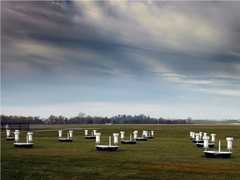X-Ray Fluorescence (XRF) is a ground-based in situ spectroscopy method used to determine the chemical composition of environmental samples. It measures the fluorescent X-ray emitted from the sample when excited by an X-ray source (0.1-10 nm) to identify its chemical composition. The two main XRF techniques are Energy Dispersive and Wavelength Dispersive. In Earth Science, XRF is employed to analyze geological samples, soils and sediments, vegetation, atmospheric particulate matter, and water samples.

Instrument Details
- Spectrometer/Radiometer
- Earth Science > Spectral/engineering > X-ray
- Land Surface
- Variable
- Point
- 299979.2-2997924.58 THz
- Currently unavailble
Currently unavailable
Currently unavailable
Varies
Currently unavailable
Currently unavailable
Unpublished
 Field Site Stationary 74 Campaigns · 176 Instruments | PAC2001 Pacific 2001 Air Quality Study 2001 Lower Fraser Valley, British Columbia, Canada 1 Deployment · 8 Data Products
|
Filter data products from this instrument by specific campaigns, platforms, or formats.
CAMPAIGNS
PLATFORMS
FORMATS